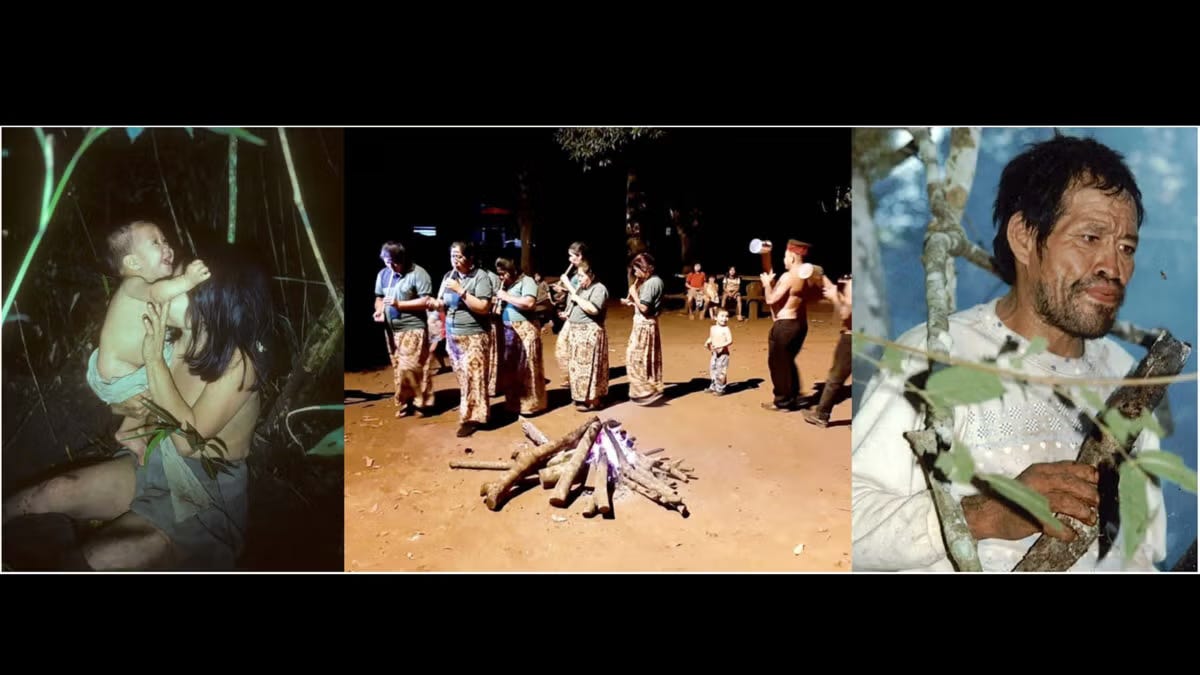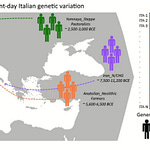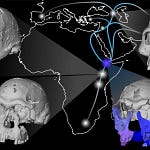The Silence of the Forest
In the humid forests of eastern Paraguay, where the tall canopies hush the chatter of insects and wind, researchers have observed something unexpected: a society that lives without song and dance. Not entirely without music—but without two particular forms long thought universal among humans—lullabies and communal dancing.

A recent study published in Current Biology1 by Manvir Singh and Kim Hill draws from four decades of intimate ethnographic work among the Northern Aché, an Indigenous community whose lifestyle once depended heavily on foraging and hunting. The findings call into question some of the foundational ideas in evolutionary anthropology about the universality of music, and specifically its social functions.
“Dance and infant-related song are widely considered universal—a view that has been supported by cross-cultural research, including my own,” Singh writes in the study. “And this conclusion, in turn, informs evolutionary theorizing about music’s origins.”
Four Decades in the Field
Between 1977 and 2020, Hill—an anthropologist at Arizona State University—spent over ten years living with Northern Aché families. He documented daily life, language, gossip, mourning rituals, and much more. What he never witnessed, however, was anyone dancing. Nor did he observe parents singing to their babies.
“I lived with the Aché, I ate meals with them,” Hill recalls. “I was in really intimate proximity to them. I listened to them gossip, I listened to the kids crying.”
This absence is all the more surprising because singing is not foreign to the Aché. Men often sing solo—sometimes about a recent hunt, sometimes in reflection on interpersonal conflicts. Women may sing too, especially about the dead. But the musical expression is solitary and unscripted, and it steers clear of infants. There are no lullabies, no shared tunes for soothing children to sleep.
When Culture Forgets
So how could a community lose something as seemingly basic as dancing?
The researchers offer two explanations. First is a historical bottleneck. During intense population pressures in the 20th century—including displacement and increased contact with outsiders—several traditional Aché practices disappeared. These included fire-making, horticulture, puberty ceremonies, and even shamanic practices. Music may have eroded alongside these.
A second possibility is more recent: the impact of missionary activity. As the Northern Aché settled onto permanent reservations, external influences—both subtle and overt—contributed to the loss of traditional cultural practices. In some cases, this included the suppression of ritual and music.
“It’s not that the Northern Aché don’t have any need for lullabies,” Singh notes. “Aché parents still calm fussy infants. They use playful speech, funny faces, smiling and giggling.”
This raises an important point. Lullabies are not the only way to soothe children. But they are, according to most anthropological surveys, the most common way across cultures. Which is why their absence here is so revealing.
Nature or Nurture?
The loss of lullabies and dance doesn’t negate the idea that humans may have evolved to find these behaviors rewarding. But it does challenge how those traits are sustained. Rather than being hardwired and inevitable—like smiling or crying—the study suggests that song and dance are more like fire-making: cultural inventions that must be taught, maintained, and transmitted.
“This doesn’t refute the possibility that humans have genetically evolved adaptations for dancing and responding to lullabies,” Singh explains. “It does mean, however, that cultural transmission matters much more… than many researchers, including myself, have suspected.”
That distinction matters. If lullabies and dancing are learned behaviors, then their survival depends on the communities that carry them. They’re not evolutionary certainties—they’re cultural achievements, and like all such achievements, they can vanish.
Rethinking Universals
What does this mean for anthropology?
The belief in cultural universals—those traits presumed to be shared by all human societies—has long shaped how scholars understand evolution, language, and art. Song and dance often sit near the top of such lists, underpinned by arguments about social bonding, infant care, and community cohesion.
But as the Northern Aché show, cultural practices—even those that seem deeply embedded—can be lost. Their absence doesn’t suggest inferiority or lack. It merely points to a different historical trajectory.
Anthropologist Michelle Scalise Sugiyama once argued that music is a kind of cognitive fossil: a behavior passed down from ancestral environments to modern contexts, often preserving clues about the past. If so, then the Northern Aché’s silence is equally revealing—a fossil not of continuity, but of absence.
A Vanishing World, and Its Lessons
Today, younger generations of the Northern Aché are growing up in a changing world. Missionary influences, access to education, and integration with broader Paraguayan society are reshaping language, rituals, and possibly reintroducing music.
But for now, the Aché remain a rare reminder: culture is fragile. It is shaped not just by environment and biology, but by history, memory, and loss.
“We may be changing all kinds of things without knowing it,” Singh observes. “And I don’t know if that’s good or bad, but it’s a little worrying that we have no idea what we’re doing.”
Related Research
Mehr, S. A., Singh, M., York, H., Glowacki, L., & Krasnow, M. M. (2019). Form and function in human song. Current Biology, 29(4), 621–625.e3. https://doi.org/10.1016/j.cub.2019.01.017
Patel, A. D. (2008). Music, Language, and the Brain. Oxford University Press.
Savage, P. E., Loui, P., Tarr, B., & Schachner, A. (2021). Music as a coevolved system for social bonding. Behavioral and Brain Sciences, 44, e59. https://doi.org/10.1017/S0140525X20000333
Trehub, S. E., & Trainor, L. J. (1998). Singing to infants: Lullabies and play songs. Advances in Infancy Research, 12, 43–77.
Singh, M., & Hill, K. (2025). Loss of dance and infant-directed song among the Northern Aché. Current Biology: CB. https://doi.org/10.1016/j.cub.2025.04.018









